There are few things as peaceful in life as standup paddling down a crystal-clear river that meanders through a quiet forest or floating out on a calm bay. But for many learning to standup paddleboard, there are few things as stressful as figuring out how to load a paddleboard onto the car’s roof racks, and keep it secure on the highway to reach the water.
The act of transporting a paddleboard can be perplexing. But there’s a method that works for every board and every vehicle, and even whether you have roof racks or not. Once you learn the steps, it will soon be a quicker and easier process than you thought.
In this article, we’ll go over a few of the methods you can use to get your SUP to the put-in, as well as some helpful tips for keeping your board, vehicle and other vehicles on the road safe.
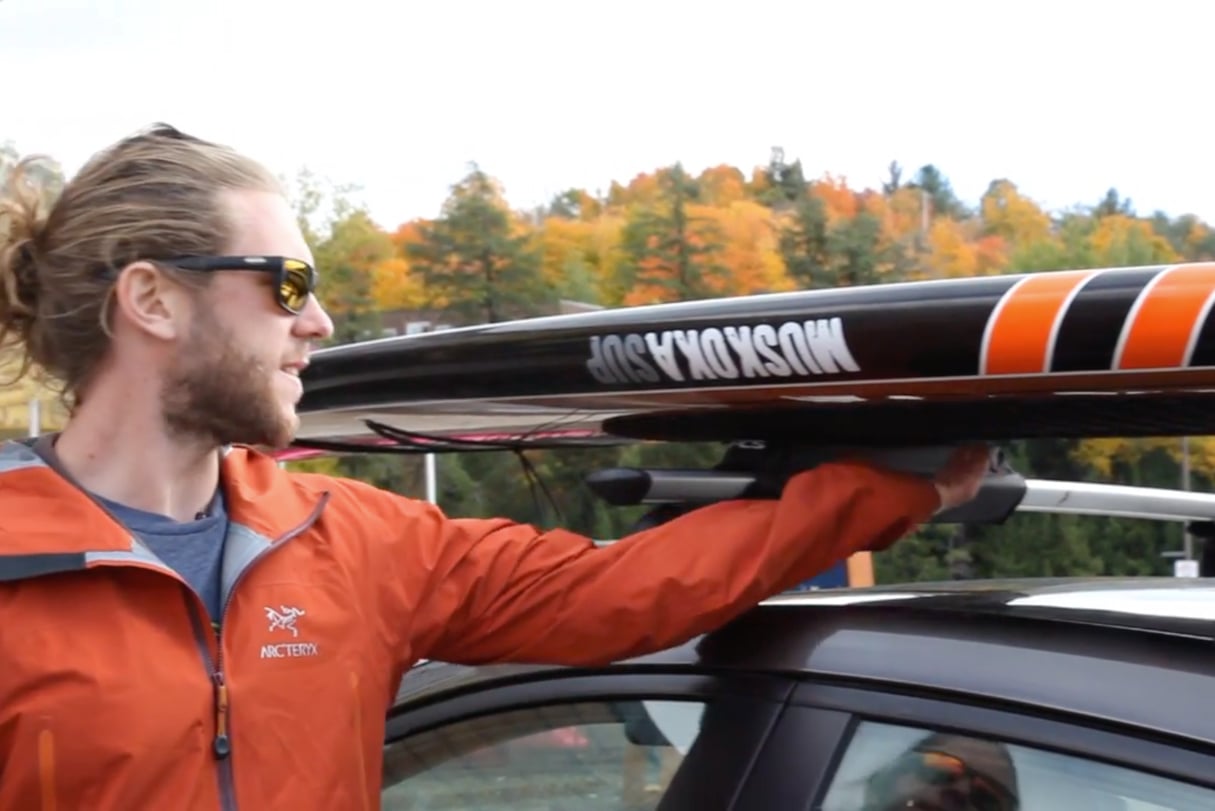
How to transport a paddleboard on your car
Steps for using a roof rack
The great thing about paddleboarding is that, regardless of the length of board, most models are lightweight builds that can be lifted onto a car without the help of a second person. There are some exceptions—such as heavier plastic boards—but the vast majority of paddleboards can be loaded solo. Regardless of which roof rack (or lack of) your car might have, the loading process is generally the same.
- Make sure the crossbars or pads are in place and the vehicle is clear and ready to have the board put on top. This will avoid you having to lay your board down in your driveway or trying to find a clear piece of grass for it.
- The board can point with either the nose or tail forward. When you lift the paddleboard to place it on the racks you generally want it to lay with the standing deck face-down on the racks. Placing the board with the deck facing down lets air pass across the hull with little resistance, and keeps the bottom from getting damaged from over tightening on a roof rack without padding.
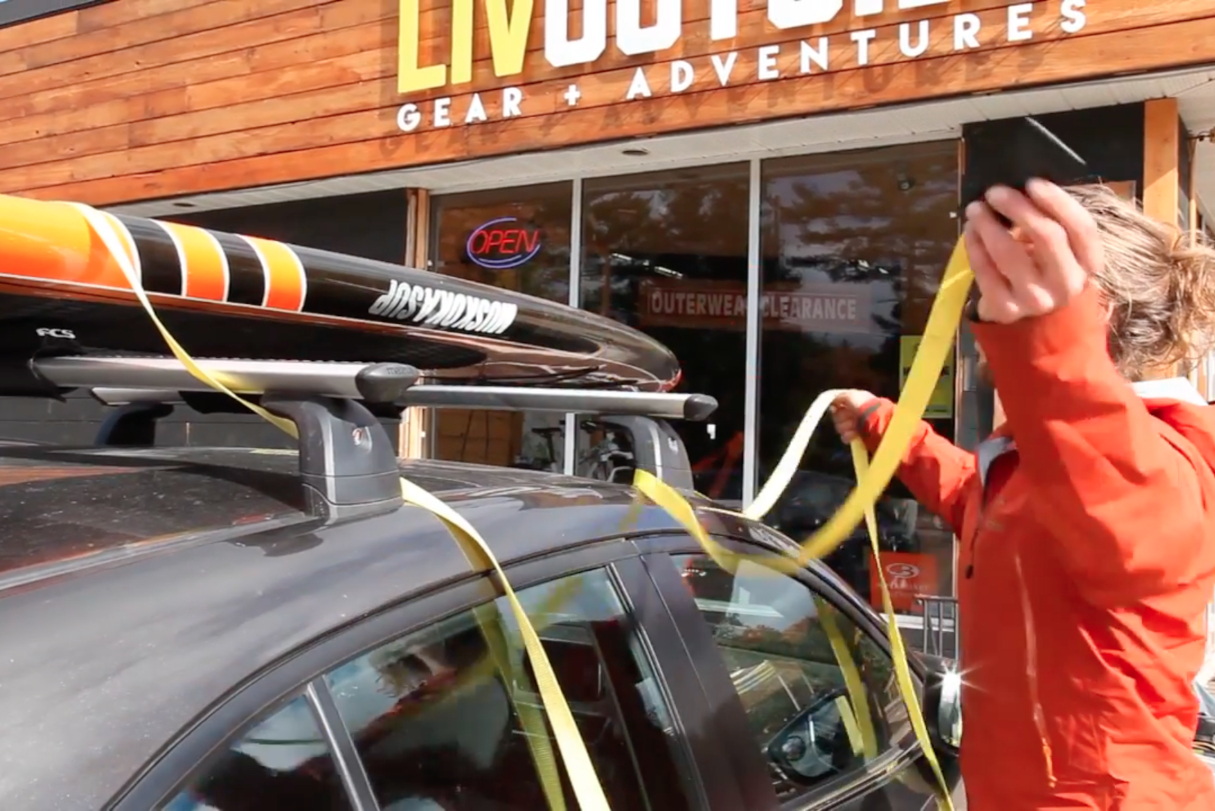
- Pass a cam strap around the inside of each rack at one end, then gently pass or toss the buckle end of each strap over the board.
- Pass the buckle end underneath the crossbar at the other side, then bring the buckle back over the board to meet the free end.
- Insert the free end into the teeth of the cam strap. Cinch down the strap until the board is firmly secured. Wiggle the board. If it shifts easily cinch down some more. Avoid over tightening which could damage your board.
- Tuck the excess strap either under the taut strap or wrap it around a free space on the roof rack.
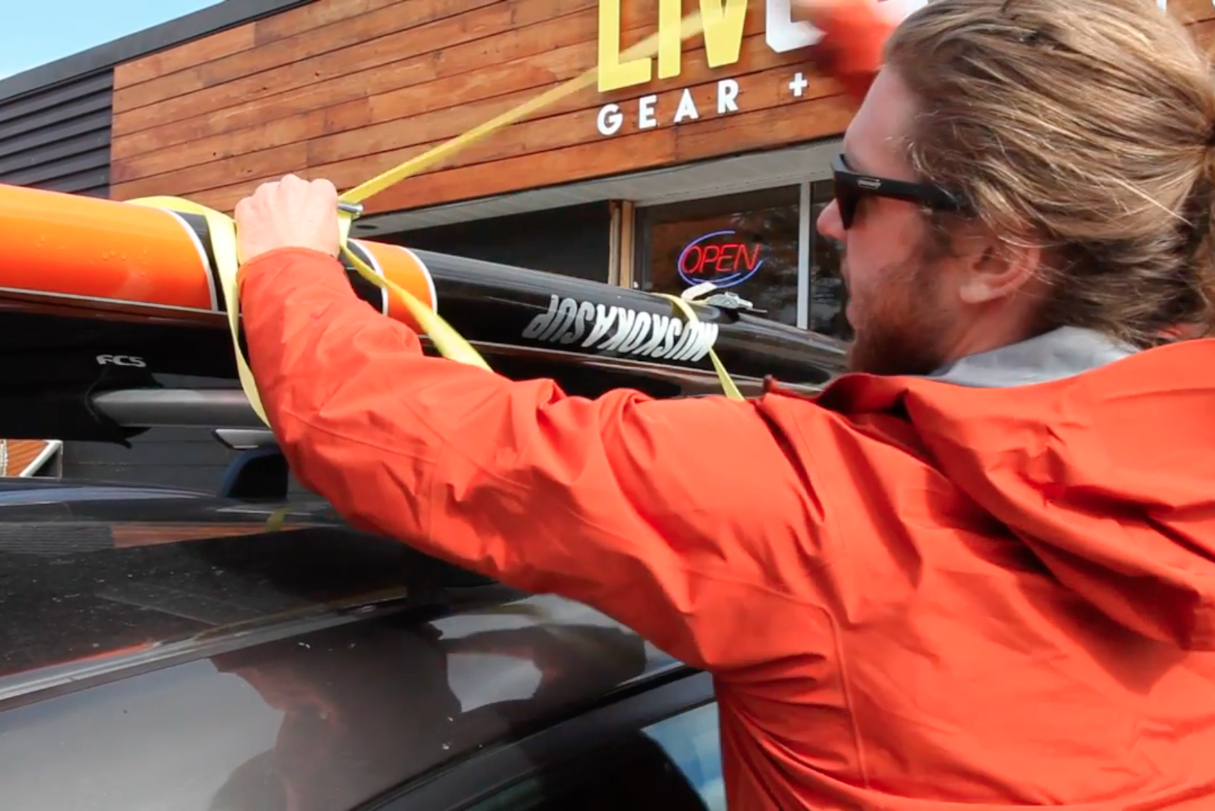
Additional tips
- It’s best to place some form of board padding on your crossbars to protect your board from damage that can be cause from cinching the board down.
- If you use a long standup paddleboard that extends beyond the back of your vehicle, then it’s best to attach a small red flag to make it clear to drivers following you.
How to transport a paddleboard without a roof rack
Many sedans and hatchbacks don’t come with roof racks or rails. Soft rack systems or foam blocks are relatively inexpensive and have protective padding to secure your paddleboard. They sit on the roof and are combined with straps that run through the interior of the vehicle to keep the paddleboard in place.
- With the blocks in place the paddleboard on top as mentioned in the steps for using a roof rack.
- Open your car doors to pass and end of the strap through the vehicle then over the board to meet the other end of the strap as if you’ve made a circle.
- Tighten the straps before closing the doors, cinching them so the board stays in place if you give it a wiggle.
Keep in mind that the straps will be causing a small gap between the seal of the door and the door frame, so if you’re driving in rain, water will likely permeate the straps and drip into your interior.
How to transport a paddleboard in a truck
Trucks are great for transporting things that fit into the pickup bed, but with most paddleboards ranging from 10 to 14 feet, mounting them is a little more complicated.
Assuming the truck doesn’t have a rack system built in (in which case mounting the board is the same as with any vehicle with a rack), you’ll need to have the board hanging off the back.
- Close the tailgate and set the board as far into the pickup bed as it will reach.
- Put some sort of padding over the tailgate.
- Then at one of the tie-down mounts in the bed or on the side rails of the truck, pass a strap or rope through and over the boards to the other side to secure them.
As mentioned above, if the board hangs past the tailgate by more than a couple of feet, a red or orange marker is highly recommended, and might be required by law.
Other considerations
Understanding the parts of a roof rack
In order to figure out how you’re going to mount your board, it’s important to understand the terminology.
- There’s the roof itself, which is the easy one.
- Then there are rails, which some cars have from the factory and which your rack system will attach to.
- The feet, tower or leg is the blocky component that both attaches to the vehicle and the crossbar.
- The crossbars are the board or pipe shaped lengths of the roof rack you mount your paddleboard onto.
Think of it like this: the paddleboard sits on a board rack or crossbar cushions, which sit on the crossbars, which sit on the rail or which are mounted to feet which are attached to the car.
Can you put an inflatable SUP on a roof rack?
One of the most appealing things about inflatable paddleboards is the fact that they fold down to fit into a (large) backpack. That means loading a board into a vehicle takes about as long as throwing a bag into the truck or hatch of a car. Of course, the tradeoff is allowing 10 minutes of preparation time before and after your paddle to inflate and deflate the board.
The question that often comes up for people using their inflatable boards on a regular basis is whether or not they can be transported on the roof of a car while inflated. The good news is that quality inflatable standup paddleboards today are surprisingly rigid, which means even 12-foot, 6-inch or 14-foot boards can be transported without folding in half like a poorly tied-down mattress.
Keep in mind that you are still transporting an air-filled vessel, meaning something hitting it could result in a puncture. That being said, something hitting your inflatable with enough force to cause a hole would also cause significant damage to a hard board.
Transporting two paddleboards
Unless you have extremely wide crossbars, carrying two boards will mean stacking them on top of each other to turn your vehicle into a double paddleboard rack.
To do this, load the first board onto the bars as suggested above, typically with the fin at the back of the vehicle. Next, put some padding on top of the first board so the two paddleboards aren’t directly touching each other. Pool noodles or plumbing insulation works great for this because they don’t create much of a gap between the two boards. Offset the boards so the top board sits just in front of the fin of the bottom board.
Understanding how to tie down two paddleboards isn’t much different from one board. Just strap the two paddleboards to the vehicle as suggested above with the straps going all the way over the top of the two boards. Longer straps might be required.
If you have a particularly tall vehicle like an SUV, be cautious entering garages or parking structures. Know how tall the total setup is and pay attention to height restrictions.
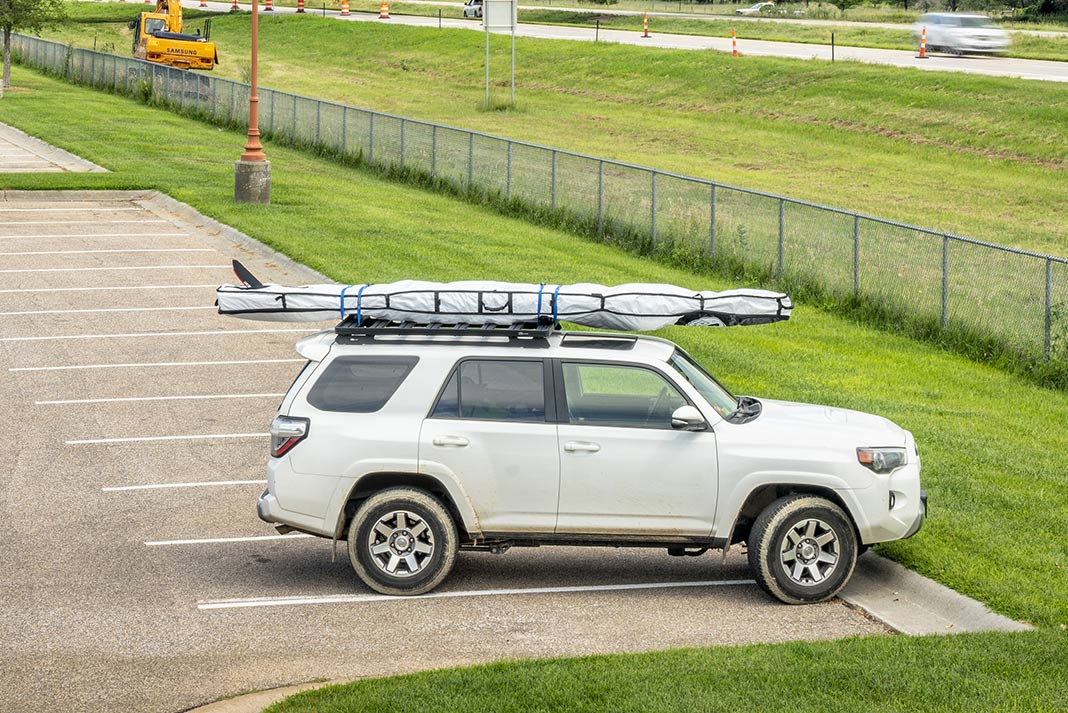
To bag or not to bag
Other than inflatable boards, it’s extremely rare for paddleboards to be sold with a bag included. Depending on the length of board and the style of bag, bags can cost as much as $300. But is it a worthwhile investment?
A major concern with transporting paddleboards on the roof of the car is the impact of a hot sun. While the vehicle is in motion, the board is being constantly cooled by the wind, but if you’re leaving your board on a car all day at the office in order to hit the water as soon as the work day is done, the hot sun can be damaging. High-quality paddleboard bags have thermal protection to keep the sun rays at bay. An added benefit is protecting your board from rocks and road debris that might fly up and hit it while driving.
Most bags are not water-tight, so expect there might be some water in the bag if you’re driving in a heavy rain. It’s recommended that you leave the zipper open slightly at the back to allow the water to drain out. Keeping the zippers at the back rather than the front is also important because the wind will push the zippers open if they’re at the front of the bag. Paddleboard bags also keep boards protected in garages and sheds, but it’s always a good idea to let the board and bag dry off before storing it away.
Locked and loaded
Another big concern with leaving paddleboards on the roof is how to secure them. Unlike canoes or kayaks, which have easy places to run cable locks through, the simplicity of paddleboards means there are few options for locking them on the roof. Locking tie-down straps aren’t inexpensive, but they’re a must anytime you’re leaving a board on the roof unattended. They have metal-reinforced straps and key-locks on the closure, which should be enough to deter thieves looking for a quick slash and grab.
John Thomson shows how to strap down a paddleboard for transport. | Feature Photo: Paddling Magazine Staff



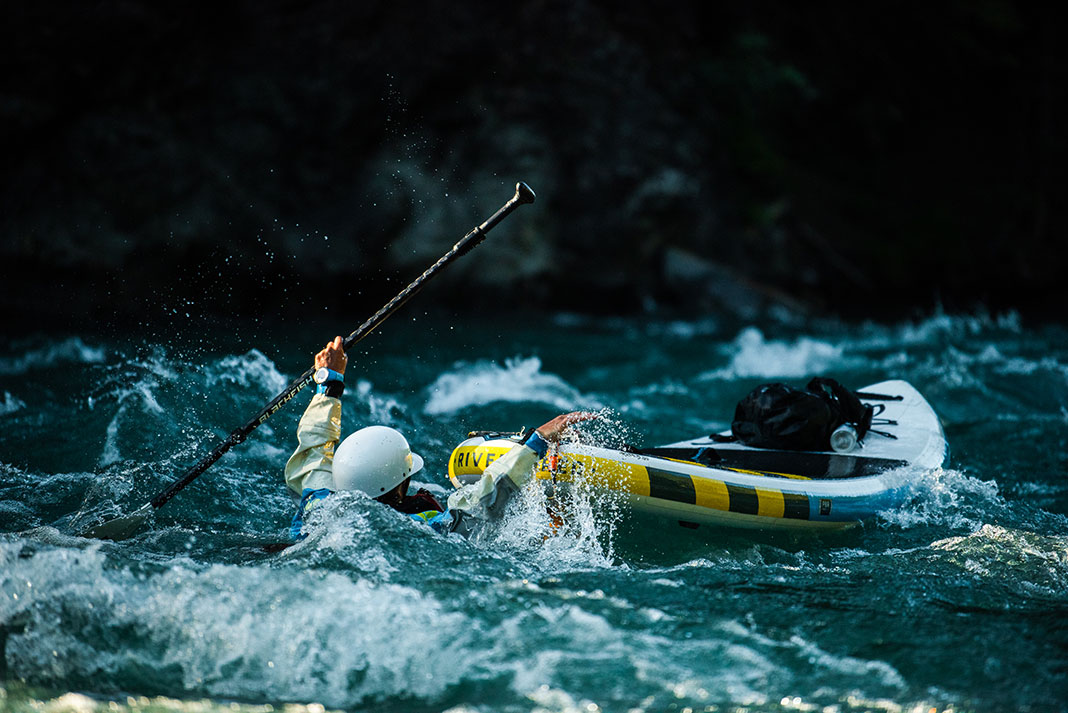






I’d like to know the best way to transport both a kayak and a sup at the same time on a roof rack. Any suggestions? Ideally, I’d like to also be able to transport 2 kayaks and a sup. If the sup could go vertical next to one of the kayaks, it would work.